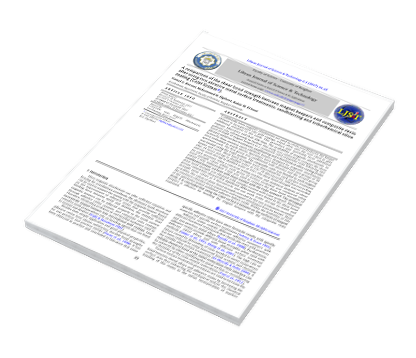A comparison of the shear bond strength between magnet keepers and composite resin after using two abrasive metal surface treatments; sandblasting and tribochemical silica coating (CoJet System®).
DOI:
https://doi.org/10.37376/ljst.v6i1.2543Keywords:
Composite resin, Magnet, Attachments, Sandblasting, Shear bond.Abstract
Traditionally when magnetic attachments are used to retain overdentures, the keeper element is incorporated into gold copings, which often uses the root canal to gain additional retention to the tooth. This procedure may inevitably incur additional expense, laboratory and chair side time. The availability of magnetic attachments to patients may subsequently be limited. This study was conducted to compare the shear bond strength of magnet keepers to a commonly used composite resin following two abrasive metal surface treatments; sandblasting and tribochemical silica coating (CoJet System®). Sixty stainless steels (AUM20) keepers designed for magnetic attachments were embedded in acrylic blocks. Specimens were then divided into two groups of 30 specimens each. The first group was sandblasted with alumina and the second group was treated using the CoJet system. The composite resin was bonded to each magnet keeper and cured. Shear bond strengths were determined for each surface treatment after 24 hours storage in distilled water at 37C° (0 thermocycle), 500 thermocycling, and one-week storage in distilled water at 37C°. The shear bond strength was recorded for each specimen using a universal testing machine and statistical analysis of shear bond strength values within each group of surface treatment was compared using paired T-test. Independent T-test was used to compare the shear bond strengths of sandblasted keeper surfaces with those treated with the CoJet system®. The strongest shear bond strength was obtained with samples treated with CoJet system®. Between groups comparison showed that significant differences were found in the shear bond strength mean values at 0 thermocycle and one week water storage (p=0.001 and p=0.006). The values of shear bond strength recorded by the two treatments exceeded the maximum retentive force required to pull magnet attachment from its keeper. Most of the specimens tested exhibited adhesive failure mode. Within the limitation of this study, it is concluded that using the CoJet surface treatment on the surfaces of magnet keepers is effective for bonding the magnet keepers with the composite resin examined
Downloads










 LJST Copy rights form
LJST Copy rights form


